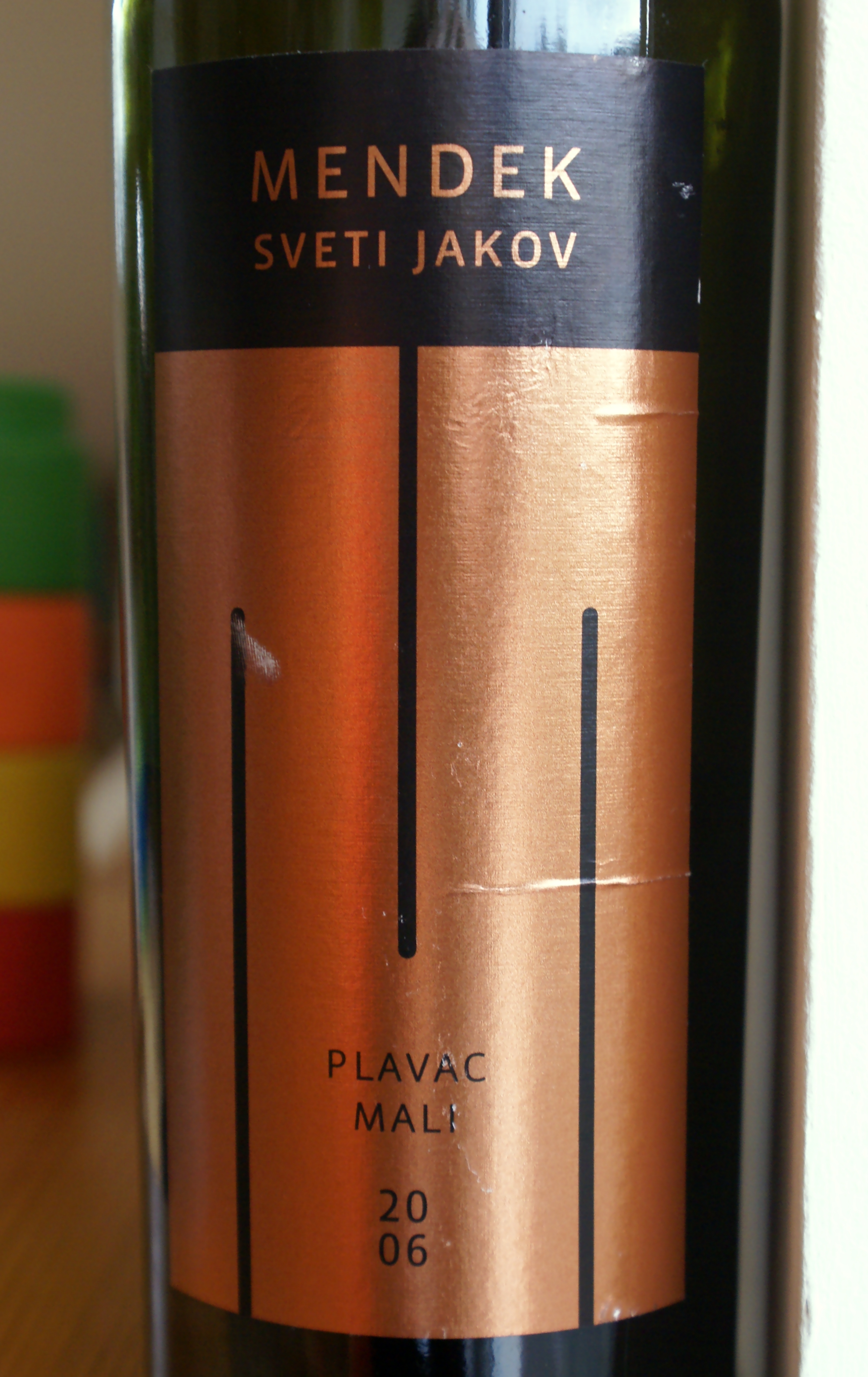Mendek Plavac Sv. Jakov 2006
Posted on 20 September 2011
I continue my exploration of the wines of Croatia. Not only to me, Croatia increasingly appears as one of the most exciting wine countries in Europe and beyond. With EU membership scheduled for July 2013 being sealed just now, more excitement (and exposure) is yet to come.
I’ve picked this 2006 Sv. Jakov Plavac Mali from Mendek in a wine shop in Poreč last April. Price was around 13€. Mendek is a brand belonging to a large import company; there is also some Istrian Malvazija made here as well as some more expensive Plavacs including the 15€ Mozaik and 35€ Selekcija. Tuscany’s Roberto Cipresso is the consultant winemaker.
This Sv. Jakov is a stunning effort. What is stunning is actually the balance and drinkability, not the sheer power. Plavac is related to Zinfandel. Most modern Plavacs do try to taste like Zins, and they succeed. An early-ripening grape, in the hot Adriatic summer on poor stony soils it will easily climb to 15 or more % alcohol. The wines can be and often are exceedingly rich, concentrated, with decadent ripe fruit profiles. But Plavac’s naturally lowish acids and somewhat rustic tannins mean that it’s a grape easy to overdo, and difficult to balance. Some taste like fruit jam with ground black pepper. It can be impressive but would you drink three glasses of jam?
My impression from two recent trips to Croatia is that after a period of über-Plavacs there’s a tendency towards more balanced styles emerging at the moment. Plavac makes great everyday reds (as well as rosés) but a premium bottling clocking in at only 13.8% alc. is a relatively new phenomenon: Korta Katarina’s 2007 is one of the more serious wines I’ve tasted from Dalmatia.
This Sv. Jakov from Mendek is another case in point. It’s 13.5% on the label, and opens with a surprising acidity that’s poles apart from the flabby, oily expression we were long told is in Plavac’s DNA. The taste profile here is actually familiar: plums, prunes, bitter cherries, black peppercorn, tar (a frequent note also in Zinfandel) but there is also an autumnal, fallen-leaf feel to the whole, and it tastes bone-dry and vinous rather than sweet and jammy. The other interesting thing is the staying power. Overripe, superalcoholic Plavac oxidises very easily. This wine improved over three days from opening. For a mid-priced wine from 2006, it’s still on the ascending curve.
If anything, this wine is more reminiscent of Negroamaro than Primitivo from Italy’s Puglia. (Although genetically, Primitivo is from the same family as Plavac or Zin). The tautness, the slight bitterness, food friendliness and gracious ageing bring it close to Salice Salentino. A most interesting, and stylish, wine: another hit from Croatia.
Disclosure
Source of wine: own purchase.


